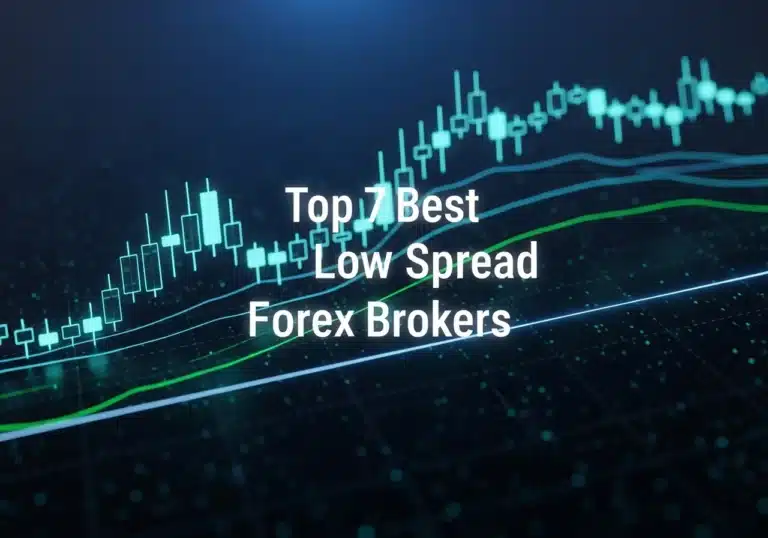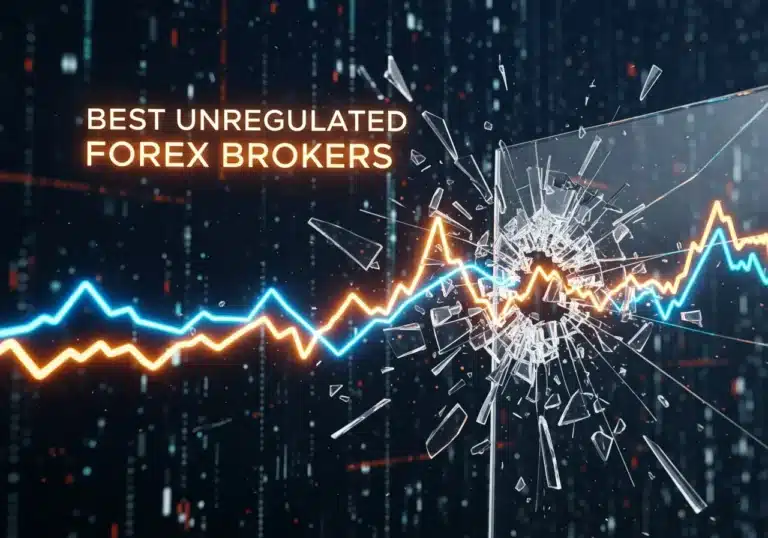The primary difference in forex vs crypto volatility is that cryptocurrencies are significantly more volatile than forex pairs. Daily price swings of 5-10% are common in crypto, whereas major forex pairs typically fluctuate by less than 1%. This guide will delve into the reasons behind this disparity, exploring the unique drivers of volatility in each market, how it impacts risk and opportunity, and which environment might better suit your trading personality. For traders seeking a stable environment, a regulated forex broker often provides a more suitable platform.
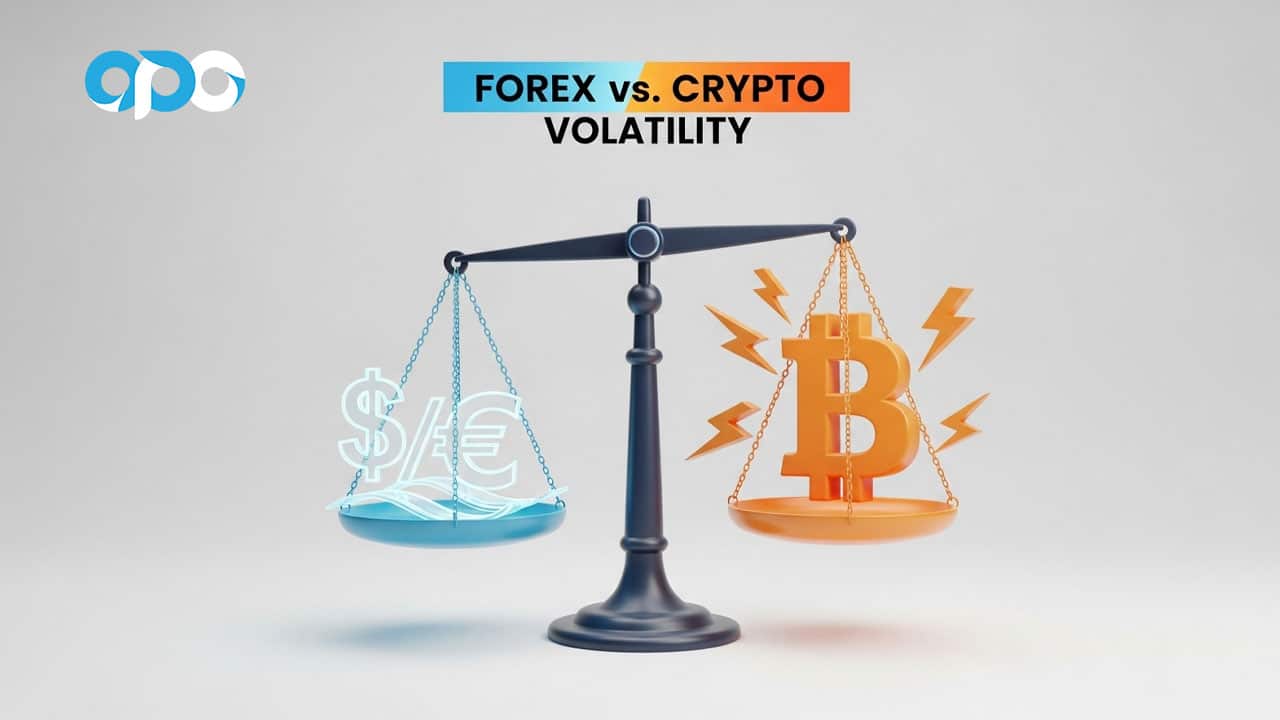
Key Takeaways
- Magnitude of Movement: The core distinction in crypto vs forex volatility lies in the scale. Crypto markets can experience double-digit percentage swings in a single day, while major forex pairs rarely exceed 1-2%.
- Market Drivers: Forex volatility is primarily driven by macroeconomic factors like interest rates, inflation, and geopolitical events. Crypto volatility is fueled by market sentiment, regulatory news, technological changes, and social media hype.
- Market Maturity and Size: The forex market’s vast size ($7.5 trillion daily volume) and maturity create high liquidity and dampen volatility. The smaller, younger crypto market is less liquid and more susceptible to large price movements.
- Risk and Opportunity: High volatility in crypto offers the potential for massive, rapid profits but carries an equally high risk of substantial losses. The lower volatility in forex generally translates to more predictable, though smaller, price movements, often amplified with leverage.
- Trading Hours: The 24/7 nature of the crypto market can lead to continuous volatility and price gaps, whereas the 24/5 forex market follows the global business week, with distinct session-based volatility patterns.
Understanding Volatility: What It Is and Why It Matters
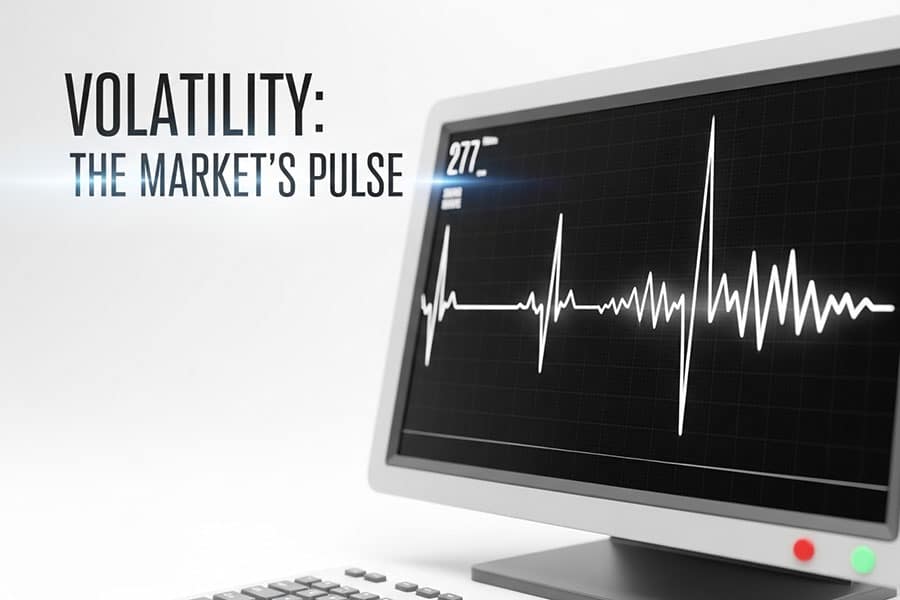
At its heart, market volatility is a measure of how much and how quickly the price of an asset changes over time. Think of it as the market’s pulse. A calm, steady pulse signifies low volatility, while a rapid, erratic one indicates high volatility. For traders, volatility is a double-edged sword. On one hand, it creates opportunities to profit from price movements; without movement, there’s no gain.
On the other hand, it represents risk—the greater the price swings, the higher the potential for loss. Understanding the nuances of forex vs crypto volatility is fundamental for any trader looking to navigate these dynamic arenas successfully. Volatility is often measured using statistical tools like standard deviation, which gauges how spread out prices are from their average, or indicators like the Average True Range (ATR), which tracks the average size of price ranges over a specific period.
Read More: Forex vs. Cryptocurrency trading
Crypto vs. Forex Volatility: The Core Differences
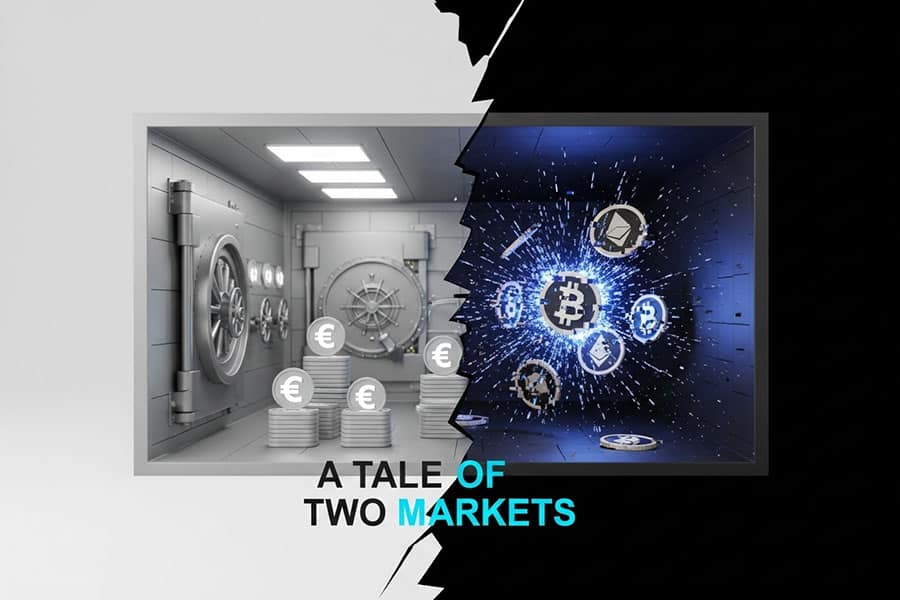
The conversation about crypto vs forex volatility is one of stark contrasts. While both markets offer traders opportunities, the nature and scale of their price movements are worlds apart. This difference stems from fundamental characteristics related to market maturity, size, liquidity, and the forces that drive price action. To get a quick overview, let’s start with a direct comparison.
| Feature | Forex Market | Crypto Market |
|---|---|---|
| Average Volatility | Low to Moderate | High to Extreme |
| Primary Drivers | Economic Data, Central Banks | Sentiment, Regulation, Tech |
| Trading Hours | 24/5 | 24/7/365 |
| Market Maturity | Established, Mature | Young, Evolving |
| Liquidity | Very High | Lower, Fragmented |
A Deep Dive into the Numbers
To truly grasp the chasm between forex vs crypto volatility, we need to look at the data. A major currency pair like EUR/USD might have an average daily volatility of around 0.5% to 1%. This means that on a typical day, the price moves within a relatively tight range. Even during significant economic announcements, a 2% move would be considered exceptionally large. In contrast, Bitcoin (BTC), the least volatile of the major cryptocurrencies, can easily see daily swings of 3-5%. For altcoins, this figure can jump into the double digits.
For instance, it’s not unusual for a new, hyped project to surge or crash by 20-30% in a single 24-hour period. These aren’t rare events; they are a defining feature of the crypto market. Visually, a price chart of a forex pair often looks like a series of gentle hills, whereas a crypto chart frequently resembles a dramatic mountain range, with sharp peaks and deep valleys.
What Drives Forex Volatility? The Macro-Economic Engine
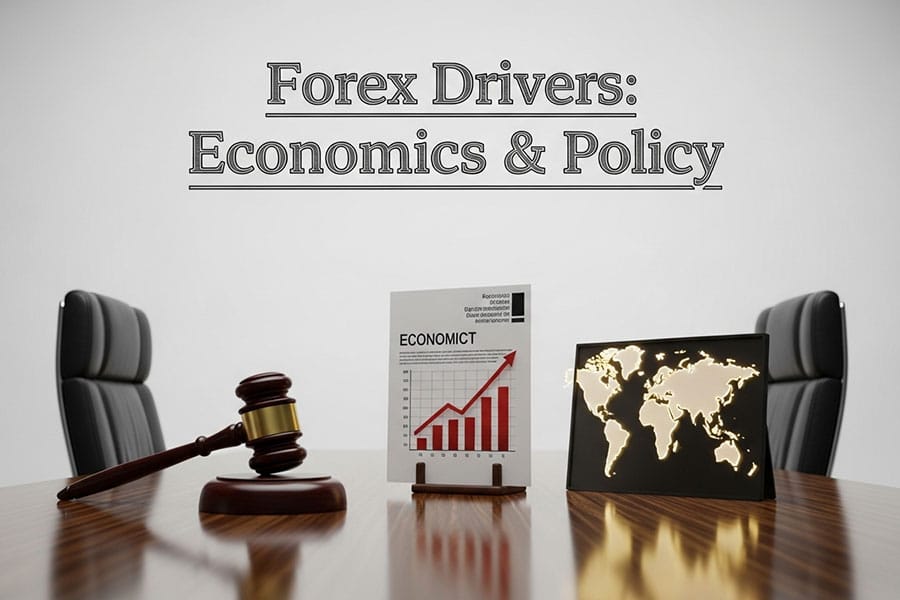
The forex market is the largest and most liquid financial market in the world, with its volatility being the result of a complex interplay of global economic forces. Understanding these drivers is key to comprehending the relatively measured nature of forex vs crypto volatility. The movements are, for the most part, reactions to quantifiable data and established institutional actions.
Central Bank Policies & Interest Rates
The single most powerful driver of forex volatility is the monetary policy set by central banks like the U.S. Federal Reserve (Fed), the European Central Bank (ECB), and the Bank of England (BoE). When a central bank raises interest rates, it makes holding that country’s currency more attractive to foreign investors seeking higher returns on their capital. This increased demand strengthens the currency. For example, when the Fed signals a series of aggressive interest rate hikes to combat inflation, the US dollar (USD) typically strengthens against other currencies like the Euro (EUR) or the Japanese Yen (JPY).
Economic Data Releases
Economic calendars are a forex trader’s best friend. Regularly scheduled data releases provide a snapshot of a country’s economic health and can cause immediate, albeit usually controlled, volatility. Key reports include Gross Domestic Product (GDP), which measures economic growth; the Consumer Price Index (CPI), which tracks inflation; and employment reports like the U.S. Non-Farm Payrolls (NFP). A stronger-than-expected NFP report, for instance, suggests a robust U.S. economy, often leading to a stronger dollar.
Geopolitical Events
Currencies are intrinsically linked to the political and social stability of their home countries. Elections, trade negotiations, international conflicts, and political scandals can all introduce uncertainty and fuel volatility. For example, the prolonged Brexit negotiations caused significant and sustained volatility in the British Pound (GBP) as traders reacted to every headline and political development.
Market Liquidity and Trading Sessions
While the forex market operates 24/5, its activity level isn’t constant. Volatility tends to be highest during the overlap of major trading sessions, particularly the London and New York sessions. This is when the majority of banks, institutions, and traders are active, leading to higher trading volume and more significant price movements. In contrast, the Asian session is often quieter, with lower volatility.
Read More: best trading strategies for volatile markets
What Fuels Crypto Volatility? The Digital Frontier

If forex volatility is a well-oiled machine driven by economic data, crypto volatility is a wildfire fueled by a mix of technology, human emotion, and regulatory ambiguity. The factors driving the crypto vs forex volatility debate are fundamentally different, reflecting the nascent and decentralized nature of the digital asset space.
Market Sentiment and Hype
In the crypto world, perception often becomes reality. Market sentiment, heavily influenced by social media platforms like X (formerly Twitter) and Reddit, can cause massive price swings. A single tweet from an influential figure or a viral meme can send a cryptocurrency soaring or crashing. This hype-driven environment creates a feedback loop where rising prices attract more buyers, pushing prices even higher, until the bubble inevitably pops. This factor is a primary reason for the extreme nature of forex vs crypto volatility.
Regulatory News and Government Actions
The cryptocurrency market operates in a constant state of regulatory uncertainty. Announcements from government bodies like the U.S. Securities and Exchange Commission (SEC) can have a profound impact. News of a potential crackdown, a ban on certain crypto activities, or the approval of a new crypto product (like a Bitcoin ETF) can cause market-wide panic selling or euphoric buying. This regulatory unpredictability is a major contributor to the high level of crypto vs forex volatility.
Technological Developments and Network Events
The technology underpinning cryptocurrencies is still evolving. Events like network upgrades, hard forks (which create a new version of a cryptocurrency), or the launch of a groundbreaking new application on a blockchain can significantly impact a coin’s perceived value. A successful upgrade can boost confidence and price, while a failed one or a security vulnerability can have the opposite effect.
Market Cap and ‘Whale’ Activity
Compared to the forex market, the overall market capitalization of cryptocurrencies is much smaller. This means that large holders, known as “whales,” can have an outsized impact on prices. A single whale selling a large portion of their holdings can trigger a sharp price drop, an effect that would be impossible in the deep and liquid forex market. This susceptibility to manipulation is a key point in the forex vs crypto volatility comparison.
The 24/7 Trading Cycle
Unlike the forex market, the crypto market never sleeps. It trades 24 hours a day, 7 days a week, 365 days a year. This constant activity means that significant events can happen at any time, often when traders in certain parts of the world are asleep. This can lead to large price gaps and amplifies the overall sense of volatility, as there are no “off hours” for the market to cool down.
Forex and Cryptocurrency Volatility: A Head-to-Head Comparison
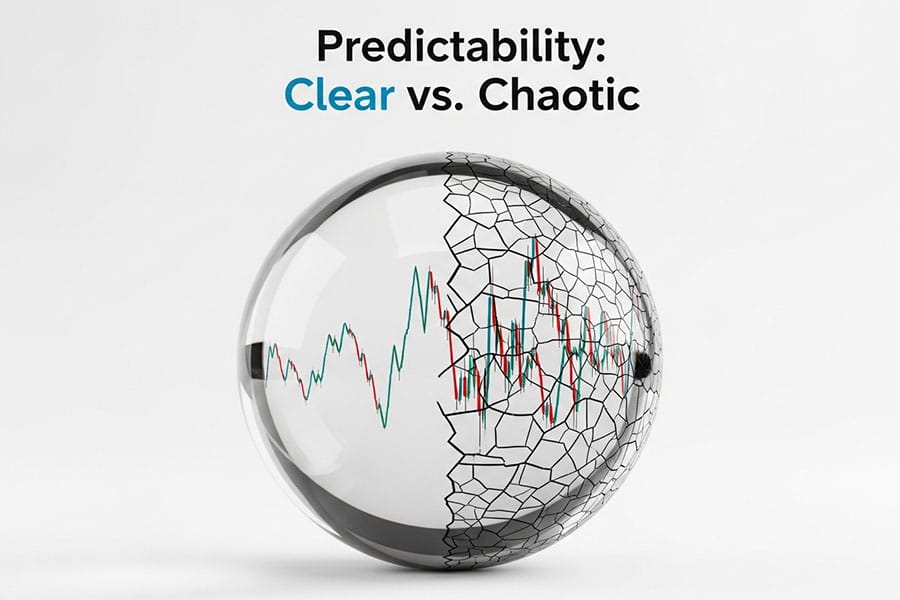
When directly comparing forex vs crypto volatility, the differences in predictability and the impact of tools like leverage become critically important for a trader’s strategy and risk management. It’s not just about the size of the moves, but how they can be analyzed and managed.
Predictability and Analysis
In the forex market, analysis is predominantly based on two pillars: fundamental analysis (studying economic data and central bank policy) and technical analysis (analyzing chart patterns and historical price data). Because the drivers are relatively well-established, these analytical methods can provide a structured framework for making trading decisions. While unexpected events occur, the market often behaves in predictable ways in response to specific economic stimuli.
The crypto market, however, presents a greater analytical challenge. While technical analysis is widely used, fundamental analysis is far more abstract. It involves assessing a project’s whitepaper, its development team, community engagement, and tokenomics. More importantly, the market is highly susceptible to unpredictable events—a sudden regulatory announcement, a social media trend, or a security hack. This makes forecasting price movements far more difficult and speculative, a key differentiator in the crypto vs forex volatility landscape.
Impact of Leverage
Leverage is a powerful tool that allows traders to control a large position with a relatively small amount of capital. In forex, brokers often offer very high leverage (e.g., 100:1 or even higher in some jurisdictions). This is partly because the inherent volatility is low. Leverage is used to amplify the small, sub-1% daily movements into potentially significant profits or losses. A 0.5% move in a currency pair, when magnified by 100:1 leverage, becomes a 50% gain or loss on the trader’s capital. This demonstrates how, despite low market volatility, forex trading can still be very risky.
In crypto, leverage is also available, but it’s typically lower than in forex. The reason is simple: the inherent volatility is already extremely high. Combining high inherent volatility with high leverage is a recipe for disaster, and most crypto exchanges limit leverage to protect both the trader and the platform. The discussion of forex vs crypto volatility must account for how leverage transforms risk in each market.
Read More: volatility index trading strategies
Which is More Profitable? Risk, Reward, and Your Trading Style
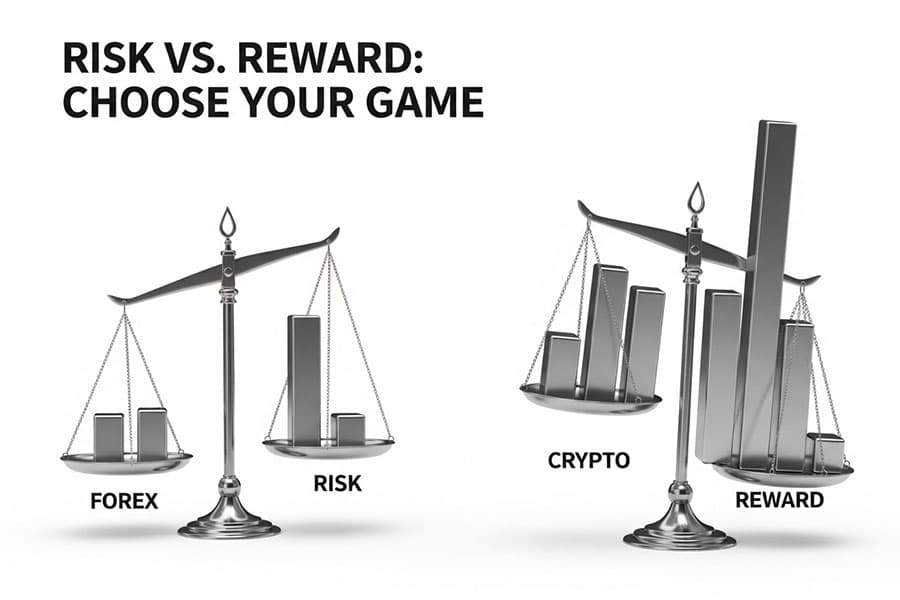
The ultimate question for many traders is not just about the level of volatility, but which market offers a better chance of profitability. The answer is not straightforward and depends entirely on a trader’s risk tolerance, strategy, and psychological makeup. The forex vs crypto volatility debate is, at its core, a discussion about risk appetite.
The High-Risk, High-Reward Nature of Crypto Volatility
The extreme volatility of the crypto market is its biggest draw and its greatest danger. It offers the potential for life-changing, exponential gains in a very short period. Traders who correctly time a bull run or invest in a small altcoin before it goes mainstream can see returns of 10x, 100x, or even more. However, the sword cuts both ways. The same volatility can lead to devastating losses just as quickly.
A portfolio can be wiped out in a matter of days or even hours during a market crash. Crypto trading is therefore best suited for traders with a very high-risk tolerance, a long-term belief in the technology, and capital they can afford to lose. The immense crypto vs forex volatility makes it a high-stakes game.
The Stable, Strategy-Driven Potential of Forex Volatility
The forex market, with its lower volatility and more predictable drivers, is generally more suitable for traders who prefer a strategic, methodical approach. Profitability in forex is typically built over time through consistent application of a well-tested strategy, rather than through sudden, dramatic price explosions. Strategies like day trading (opening and closing trades within the same day) and swing trading (holding trades for several days or weeks) are popular. The lower forex vs crypto volatility allows for more precise risk management and planning. It appeals to traders who are more risk-averse and value consistency over the lottery-like potential of crypto.
It’s Not Just About Volatility, It’s About Your Strategy
Ultimately, profitability is not an inherent quality of a market; it’s a result of the trader’s skill. A successful forex trader with a solid risk management plan can be far more profitable than a reckless crypto trader chasing hype. Conversely, a savvy crypto investor who understands the market’s cycles can achieve gains that are simply not possible in forex. The key is to choose the market whose characteristics—especially its volatility profile—align with your personal trading style, goals, and emotional discipline.
Risk Management Strategies for Volatile Markets
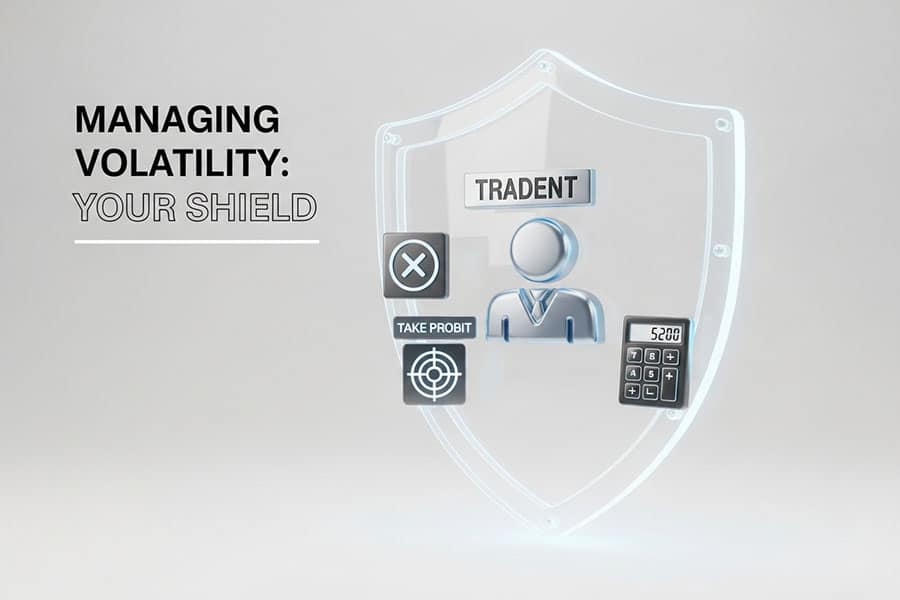
Regardless of whether you choose the turbulent waters of crypto or the flowing currents of forex, robust risk management is non-negotiable. High volatility, whether inherent or leverage-induced, can quickly deplete a trading account without proper controls. The principles of managing the risks of forex vs crypto volatility share common ground, but each market has its unique pitfalls.
Essential for Both Markets
- Setting Stop-Loss and Take-Profit Orders: This is the most fundamental risk management tool. A stop-loss order automatically closes a losing trade at a predetermined price, preventing catastrophic losses. A take-profit order closes a winning trade at a target price, ensuring you lock in profits before the market reverses.
- Proper Position Sizing: Never risk more than a small percentage of your trading capital on a single trade (a common rule is 1-2%). Proper position sizing ensures that a string of losses won’t wipe out your account, allowing you to stay in the game.
- The Importance of a Trading Plan: A trading plan outlines your strategy, risk management rules, and goals. It provides a framework for making objective decisions, helping you avoid emotional, impulsive trades driven by fear or greed.
Specifics for Crypto
When dealing with extreme crypto vs forex volatility, extra precautions are needed. The psychological pull of “Fear of Missing Out” (FOMO) is incredibly strong when prices are skyrocketing. A trading plan helps you stick to your strategy and avoid buying at the top of a hype-driven rally. Furthermore, diversifying within the crypto space—holding a mix of established coins like Bitcoin and Ethereum along with a small allocation to more speculative altcoins—can help mitigate the risk of a single project failing.
Specifics for Forex
In forex, the primary risk to manage is leverage. It’s crucial to understand that high leverage amplifies both wins and losses. Using excessive leverage is the fastest way to blow up a forex account. Another key strategy is to be acutely aware of the economic calendar. Avoid holding large, highly leveraged positions just before a major news release, as the resulting volatility can be unpredictable and lead to slippage on your orders.
The Future of Volatility: Forex and Crypto in the Next 5 Years
The landscape of both markets is constantly evolving, and the nature of forex vs crypto volatility will likely change with it. Looking ahead, several key trends may reshape these environments.
The Future of Forex Volatility
The forex market’s volatility will continue to be dictated by global economic trends, geopolitical tensions, and central bank policies. The rise of Central Bank Digital Currencies (CBDCs) could introduce a new dynamic, potentially altering liquidity and transaction flows, though this is likely a long-term development. For the foreseeable future, forex volatility is expected to remain within its historically low-to-moderate range, driven by the same fundamental factors that govern it today. Its stability relative to crypto will likely persist.
The Future of Crypto Volatility
The future of crypto vs forex volatility is more dynamic. As the crypto market matures, two opposing forces are at play. On one hand, increasing institutional adoption and clearer regulatory frameworks are expected to bring more liquidity and stability, gradually reducing volatility. As more large, long-term investors enter the space, the impact of individual “whales” and retail sentiment may diminish. On the other hand, the pace of technological innovation remains relentless, and new sectors like Decentralized Finance (DeFi) and Web3 will continue to create pockets of extreme volatility. While overall market volatility may decrease from its current frenetic levels, it will almost certainly remain significantly higher than that of the forex market for many years to come.
Opofinance Services
For traders navigating the complexities of market volatility, partnering with a robust and regulated broker is paramount. Opofinance, an ASIC-regulated broker, provides a secure and feature-rich environment for traders of all levels. Here’s what sets them apart:
- Advanced Trading Platforms: Gain a competitive edge with a suite of powerful platforms, including the industry-standard MT4 and MT5, the sophisticated cTrader, and the user-friendly OpoTrade.
- Innovative AI Tools: Leverage the power of artificial intelligence with tools like the AI Market Analyzer, a personal AI Coach, and responsive AI Support to enhance your decision-making.
- Secure & Flexible Transactions: Experience peace of mind with safe and convenient deposit and withdrawal methods, including crypto payments, all with zero fees from Opofinance.
- Social & Prop Trading: Engage with a community of traders through social trading features or explore opportunities to trade firm capital with proprietary trading programs.
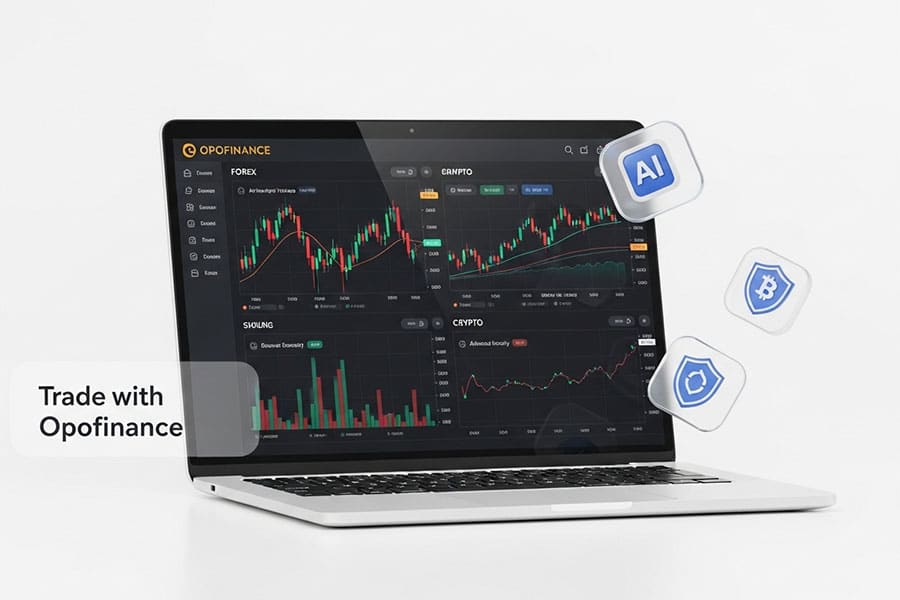
Conclusion: Which Market’s Volatility is Right for You?
The debate over forex vs crypto volatility is not about which is “better,” but which is better for you. Forex offers a stable, predictable environment driven by global economics, ideal for strategic traders who value consistency. Crypto provides a high-octane, sentiment-driven arena with the potential for explosive gains and losses, suited for those with a high-risk tolerance. Your choice depends on your financial goals, risk appetite, and trading personality. The key is education and practice—start with a demo account before you dive in.
References: +
Is it easier to make money with forex or crypto due to volatility?
Neither is “easier.” Crypto’s high volatility offers faster profit potential but also a much higher risk of rapid loss. Forex’s lower volatility often requires leverage to generate significant returns, which carries its own risk. Profitability depends on strategy and risk management, not just the market’s volatility.
Can I trade both forex and crypto to balance volatility?
Yes, many traders diversify their portfolios by trading both. They might use forex for more stable, long-term strategic positions and allocate a smaller portion of their capital to higher-risk crypto trades. This can be an effective way to balance risk and opportunity.
How does liquidity affect forex vs crypto volatility?
High liquidity in the forex market (over $7.5 trillion daily) means large orders can be absorbed without causing significant price changes, thus dampening volatility. The lower liquidity in crypto means that even moderately large orders can cause sharp price swings, increasing volatility.
Which market is more beginner-friendly considering the volatility?
Forex is generally considered more beginner-friendly. Its lower volatility, more established educational resources, and predictable reaction to economic news provide a more structured learning environment. The extreme volatility and sentiment-driven nature of crypto can be overwhelming and costly for newcomers.
Does the 24/7 nature of crypto trading make it riskier than the 24/5 forex market?
Yes, it can. The inability to “switch off” means prices can move dramatically overnight or on weekends when you are not monitoring the market. This increases the risk of “gaps” in price and requires traders to be either constantly vigilant or use automated orders like stop-losses very diligently.


